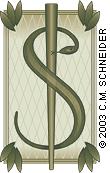
Fam Pract Manag. 2003;10(6):8

If you had any doubt that you practice in an absurdly complicated health care system, the article in this issue by Alice G. Gosfield, JD, would set you straight (see page 14). In a few pages of prose that’s as lucid as the subject allows, Gosfield summarizes the laws and regulations you need to keep in mind just to bill Medicare for diagnostic testing. Among other things, she says, you need to do the following:
Make sure you’re providing the required level of supervision to ancillary personnel involved.
Make sure you’re not allowing midlevel providers to do any of that supervision.
Make sure you’re paying fair market value for any leased equipment you’re using.
Make sure your lease payments are not calculated on a per-procedure, per-use or per-click basis.
Make sure you know which tests you’re doing are “designated health services” under the Stark regulations.
If you’re providing any designated health services outside your office, make sure you have an office at the other location where you provide your full range of services.
Make sure any independent contractors who reassign payment for testing to you perform that testing at your office.
Make sure you know when to append the -TC modifier to a testing code.
Of course, this doesn’t even touch on CLIA regulations, quality control, proficiency testing and all the clinical issues involved.
Incentives and rules
I believe you will find Gosfield’s article useful, but that’s not why I mention it here. Rather, it is a strong reminder of the amount of time you need to expend navigating bureaucratic minefields – and the amount of space Family Practice Management needs to devote to helping you do that. Her article is not the only one in this issue that has that aim in mind. “Time Is of the Essence: Coding on the Basis of Time for Physician Services,” by Aris Sophocles, MD, JD (see page 27), is another. And, much as I wish it weren’t necessary to publish them, the long clarification and one of the corrections published in the Letters department (see page 11) are more of the same.
Sophocles tackles the complexities of an aspect of CPT coding that has puzzled physicians for years – especially the question of how to choose a code on the basis of time when a visit is not exactly as long as the “typical” time for a code given by CPT. If a 99213 typically takes 15 minutes and a 99214 typically takes 25, how do you code a visit that takes 18 minutes or 21 minutes? The fact that Sophocles can offer only his best guess is a mark of the depth of the coding morass.
And the coding issues addressed in the clarification and correction I mentioned above are similarly confusing. Combinations of visits involving transitions from office to hospital or hospital to nursing facility seem to generate an endless stream of questions sent by family physicians to FPM.
The problem – and all of these are symptoms of one problem – lies at the interface between money and medicine. That you are paid for “designated health services” is what brings the Stark laws into play. That you are paid more for providing both the technical and professional portions of a test is what makes the -TC modifier so all-fired important. That you are paid more for a 99214 than for a 99213 is what makes the difference between 18 minutes and 21 minutes so worrisome.
To put it another way, in the terms I used in this space last month, the problem is misalignment of incentives. When you’re paid more to do more, payers will inevitably worry that you’ll do more simply to be paid more. If you were paid in some way that didn’t hinge on the number of services provided or the CPT codes submitted, all of these concerns would recede far into the background, potentially freeing up vast amounts of time and energy that could be devoted to providing and improving health care. Of course, other systems have been tried, and so far each has its problems. If you have any free time, you couldn’t spend it better than working out a system of health care reimbursement that actually does what it should. You would do more good than you could imagine.